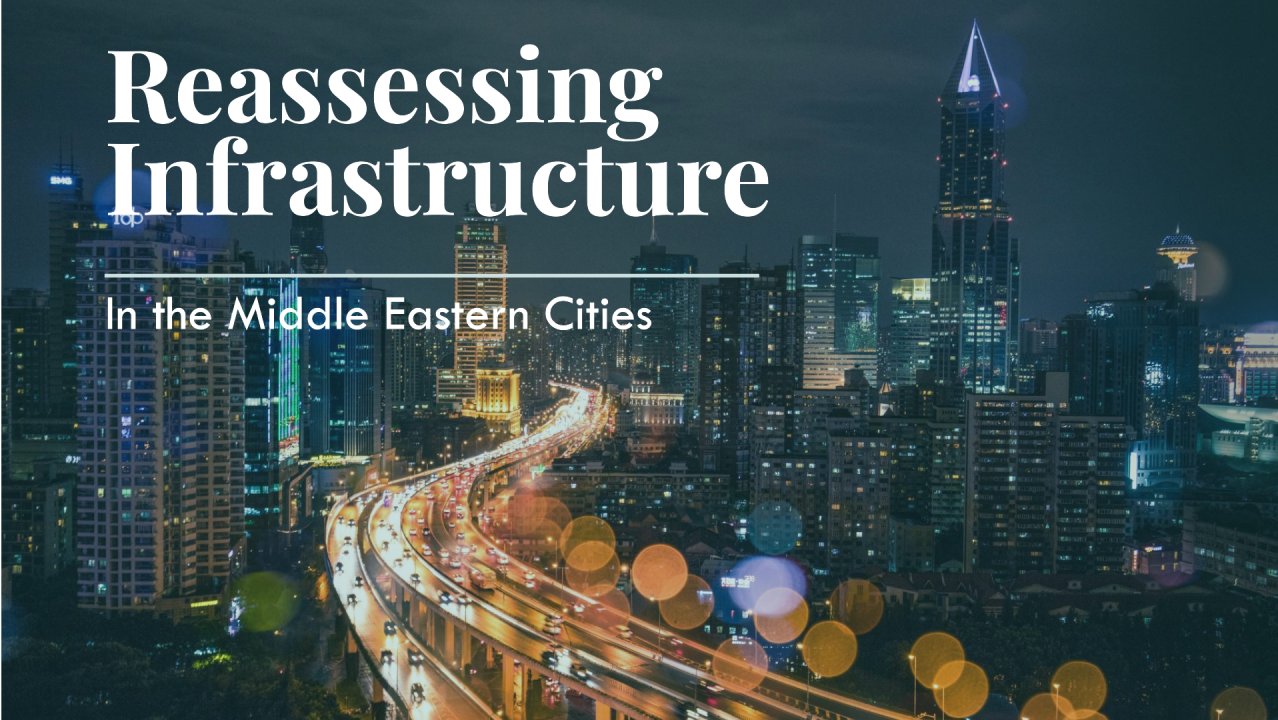
Reassessing Infrastructure in the Middle East: Building Resilient Cities for the Future
5 mins. read | 1st April 2025
The rapid expansion of urban areas in the Middle East has undoubtedly enhanced the quality of life for many residents, bringing advancements in infrastructure, healthcare, and economic opportunities. As cities grow and modernize, they offer enhanced amenities and services that contribute to the overall well-being of their inhabitants. However, the pace of urbanization has outstripped the capacity of existing infrastructure to handle emerging challenges, most notably urban flooding. This issue has exposed the vulnerabilities of modern cities, where sophisticated drainage systems and urban planning have struggled to keep up with extreme weather events. The growing frequency of urban floods underscores the need for transformative strategies to mitigate risks, ensuring that urban growth aligns with resilience and sustainability imperatives.
Recent climate events have spotlighted this urgency. Following the tragic flash floods in Sharjah, Fujairah, and Ras Al-Khaimah in 2022, Dubai faced its catastrophe in April 2024 when an intense storm system brought unprecedented rainfall, leaving large swathes of the city submerged. Streets turned into rivers, homes and businesses were inundated, and even Dubai International Airport, despite its state-of-the-art facilities, struggled as floodwaters overwhelmed its tarmac. These events have made it clear that the region’s cities must fortify themselves against the onslaught of extreme weather driven by climate change.
In response to the devastation caused by this year’s flooding, the UAE Government has announced the USD 8.2 billion Tasreef Project, which will increase Dubai’s rainwater drainage capacity by an astonishing 700%. This initiative represents a bold step towards future-proofing the city against climate challenges. Meanwhile, other Middle Eastern nations are also ramping up efforts. In Muscat, Oman, the government is developing open drainage channels to reduce flood risks, while Kuwait has allocated 5.6 million dinars to bolster rainwater management systems in key urban areas.
Urban flooding is a paradox for many Middle Eastern cities, which are otherwise known for their arid climates. Yet, the region faces significant flash flood risks due to extreme precipitation events, inadequate urban infrastructure, and sediment-clogged drainage systems. Governments have initiated monumental projects to address this crisis. For instance, Dubai’s Deep Tunnel Storm Water System was launched in 2021 to manage stormwater over 40% of the city’s landscape. However, as the recent floods demonstrate, even billion-dollar investments are no match for the growing unpredictability of climate change.
To safeguard urban areas, cities must embrace a multi-layered approach that integrates resistance, absorption, and adaptation strategies.
Resistance
To fortify our urban landscapes against the unpredictability of nature, we must adopt precision in designing structural defences. Key resistance strategies include the construction of towering berms, robust flood walls, expansive flood retention basins, and well-engineered channelization systems with culverts. However, defence mechanisms cannot remain external alone; they must be seamlessly integrated into urban infrastructure. For instance, transport networks elevated on fortified foundations, with terminals built using impermeable materials and shielded by formidable flood barriers, can ensure uninterrupted mobility even during extreme weather events. Complementing these measures, channeling stormwater through integrated drainage networks and constructing reservoirs to store excess runoff can significantly mitigate flood impacts. These architectural advancements act as a bulwark against devastation, enabling cities to stand resilient even in the face of intensifying climatic challenges.

Middle Eastern countries, having borne the brunt of urban flash floods, are heavily investing in upgrading their drainage systems. In Muscat, Oman’s capital, where 45% of areas face flood risks, the government has prioritized rainwater management through open channels in the Al Ghubreh area, aiming to streamline traffic during heavy rainfall and enhance flood mitigation. Similarly, Suhar Industrial City has initiated rainwater drainage projects, floodwalls, and irrigation-linked water flow systems to address its vulnerabilities. In Kuwait, the government allocated approximately 5.6 million dinars (USD 18.3 million) in 2024 to develop rainwater drainage networks in West Abdullah Al Mubarak, underscoring its commitment to tackling flood-related challenges through priority infrastructure projects.
Absorb and Recover
In semi-arid regions, flood management is crucial to averting disasters and ensuring urban resilience. A combination of innovative strategies can significantly mitigate flood risks. Emergency overflow structures, for instance, help redirect torrential flows away from urban areas, while the use of permeable materials in roads and pavements reduces surface runoff and supports groundwater recharge. Integrating green infrastructure into transport networks is another transformative approach, as these systems capture rainwater, nurture the land, and diminish the severity of flash floods.
Global examples provide valuable insights. Curitiba, Brazil, has prioritized flood mitigation through an interconnected network of green corridors, effectively managing stormwater while enhancing urban greenery. Similarly, the Sponge City concept in Wuhan, China, demonstrates how permeable construction materials can enhance water absorption rates, integrating flood management seamlessly into urban design.
By adopting these measures, semi-arid regions can build cities that not only withstand extreme weather but also promote environmental sustainability, creating a resilient urban future amidst the challenges of an arid landscape.
Adapt and Transform
In arid regions, tackling flash floods requires a holistic approach grounded in water-sensitive urban planning. This entails embedding water management principles into land-use regulations to ensure that urban infrastructure is inherently resilient against flooding. Strategic planning must account for stormwater drainage, natural water retention systems, and urban designs that minimize surface runoff, all tailored to the unique challenges of arid climates.
Innovation in technology plays a pivotal role in enhancing flood preparedness and response. Remote sensing, predictive modelling, and real-time monitoring systems enable precise flood forecasting, issuing timely warnings, and orchestrating swift emergency responses. Pre-established climate-resilient evacuation routes and simulations of alternative road networks further strengthen the preparedness framework. Yokohama, Japan, offers a compelling example with its model for assessing the impacts of natural disasters on critical systems like energy supply, demonstrating how data-driven approaches can mitigate risks effectively.
By integrating advanced technologies and sustainable urban planning, arid regions can build robust defences against flash floods. These measures not only safeguard lives and livelihoods but also lay the foundation for sustainable urban development in a world increasingly shaped by climate unpredictability.
Paving the Way for Sustainable Urban Development
At the core of these strategies is the principle of water-sensitive urban planning. By embedding flood management into land-use regulations, cities can harmonize development with environmental resilience. Moreover, fostering cross-regional collaborations and community involvement will strengthen the collective ability to mitigate and recover from natural disasters.
At ASCELA, a management consultancy specializing in infrastructure, transportation, sports, and logistics, we have developed a comprehensive threefold strategic vision to confront the growing menace of urban flooding. Our approach is grounded in innovation, adaptability, and a commitment to creating resilient urban environments.
Founded in 2018, ASCELA is powered by a team of strategic consultants operating from offices in the Middle East, Singapore, and India. We believe in tailored solutions, recognizing that ‘one size does not fit all.’ Each city’s challenges and opportunities are unique, and our expertise lies in reimagining urban infrastructure to address these distinct needs effectively.
The time for action is now. As the impacts of climate change become more pronounced, we cannot afford complacency. Together, we will strengthen our cities, safeguard our communities, and chart a course towards a resilient and sustainable future.

Author:
Nishtha Saha
Principal Consultant
Strategic Advisory- Mobility and Supply Chain
Share via:

